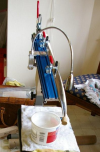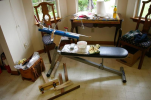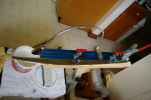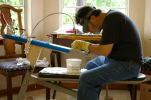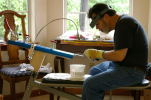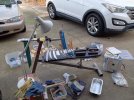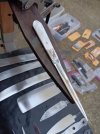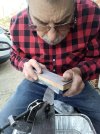- Joined
- Jan 12, 2025
- Messages
- 32
Hello everyone. I am working on a rapier right now. I am REALLY struggling with my belt sander (inconsistent angles, tooling marks left, deep gouges in spots, etc.) I have a cheap Ryobi 4x36. Two questions. It it really super helpful to have a 2x42 or a 2x 72 instead? Also, I make swords more than knives (at least for right now) is there any good jig setups you'd recommend to help keep angles super consistent? I find myself doing A LOT of hand sanding to get out blemishes that in principle should not be there after belt sanding.
The rapier itself is 5160 spring steel hot-rolled and annealed, Hammer-forged, normalized twice, heated until glowing red and non-magnetic, 7 second quench in Parks 50 oil, tempered at 350 for one hour, then again at 400 for one hour. Came out upper 50's HRC, great flexibility. Relatively straight, one super annoying curve at the tip. Pro tips on straightening after quenching I could use also. The untrained eye wouldn't notice the bend but.......I DO lol.
The rapier itself is 5160 spring steel hot-rolled and annealed, Hammer-forged, normalized twice, heated until glowing red and non-magnetic, 7 second quench in Parks 50 oil, tempered at 350 for one hour, then again at 400 for one hour. Came out upper 50's HRC, great flexibility. Relatively straight, one super annoying curve at the tip. Pro tips on straightening after quenching I could use also. The untrained eye wouldn't notice the bend but.......I DO lol.

